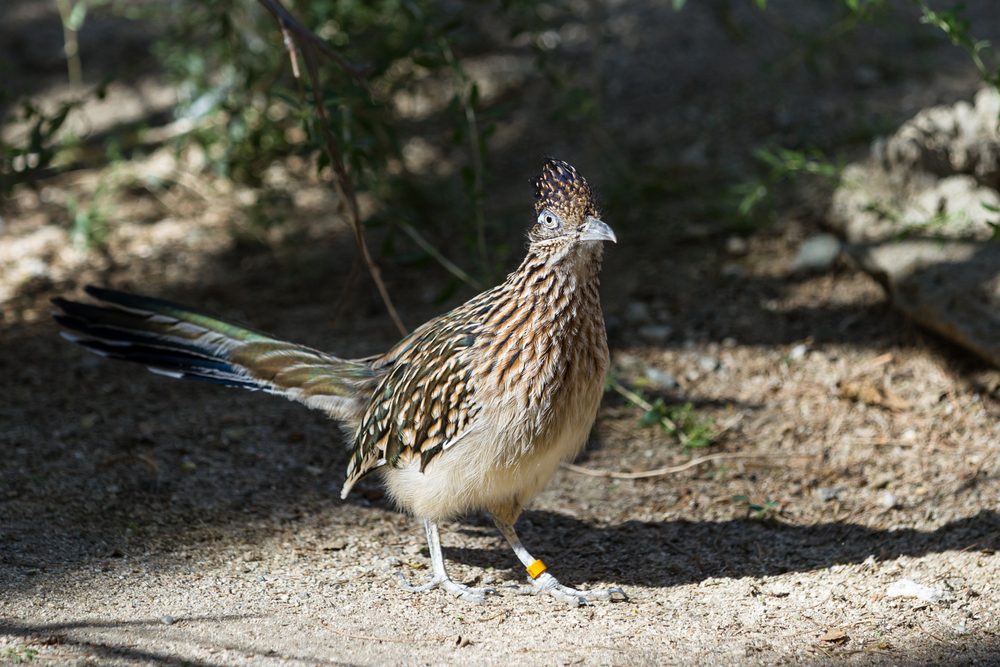
For generations, the clever antics of the Road Runner and Wile E. Coyote have delighted audiences in Looney Tunes cartoons. The lightning-fast bird, always one step ahead of the persistent predator, has become an iconic figure of quick wit and speed. But how does the cartoon stack up against reality? Let’s dash into the facts and separate animated fiction from the natural truths.

Roadrunners are nothing like their cartoon counterparts, devoid of blue feathers and orange feet, and they certainly don’t utter the famous “meep meep!” They don’t engage in elaborate schemes to outsmart coyotes into running off cliffs, a trope popularized by Looney Tunes. The reality of these birds is far more fascinating than any animated portrayal. Greater roadrunners possess remarkable abilities, thriving in desert environments, surpassing humans in speed, and even exhibiting the skill to dispatch rattlesnakes by pounding them against rocks. Despite their elusive nature and lack of recognition, they are truly a species deserving of appreciation and understanding.

Despite their appearance resembling that of a slender chicken, roadrunners belong to the cuckoo family. Their closest relatives include various New World cuckoos like the yellow-billed and black-billed cuckoos, as well as the smooth- and groove-billed anis. Named after their genus, Geococcyx, which translates from Latin to “earth-cuckoo,” roadrunners encompass just two species: the greater roadrunner (Geococcyx californianus), inhabiting regions from the southwestern and south-central United States through Mexico, and the lesser roadrunner (Geococcyx velox), found primarily in Mexico and Central America. Both species share similar characteristics, sporting striped brown plumage, an upright stance, long legs and tail, and a crest atop their heads. However, a notable distinction lies in the lesser roadrunner’s bright blue patch of skin behind the eye, while in greater roadrunners, this skin transitions from blue to white to a warm red hue.

In the United States, encounters with roadrunners are not a common occurrence. Typically, people stumble upon them unexpectedly while traversing roads, witnessing their swift sprints across the asphalt or their hunting ventures targeting sun-warmed reptiles. Roadrunners exhibit a distinctive running style, maintaining a horizontal posture with their tail flattened and their head and chest inclined forward, nearly parallel to the ground. Their flight capabilities are limited, often restricted to brief glides or quick bursts prompted by agitation.

These birds tend to shun densely forested and urban areas, favoring semi-open landscapes dominated by scrubby vegetation such as creosote, mesquite, chaparral, and tamarisk. They also inhabit grasslands, riparian woodlands, and canyon environments, often perching atop tall shrubs, rocks, or fence-posts where they engage in sunbathing, vocalizations to attract mates, and territorial surveillance.

Contrary to the cartoon portrayal in Looney Tunes, where the roadrunner consistently outpaces the coyote, reality paints a different picture. Coyotes boast superior speed, reaching up to approximately 43 miles per hour, compared to the roadrunner’s more modest pace of around 20 miles per hour. Roadrunners fall prey not only to coyotes but also to raccoons and various raptors.

In both Mexican and Native American cultures, roadrunners hold significant symbolic importance, admired for their attributes of courage, strength, speed, and endurance, as highlighted by the Cornell Lab of Ornithology. Additionally, the bird’s X-shaped footprints, featuring two toes pointing in each direction, carry sacred significance for Pueblo tribes, believed to ward off malevolent forces by disguising the bird’s direction and preventing evil spirits from pursuing them.
related images you might be interested.









